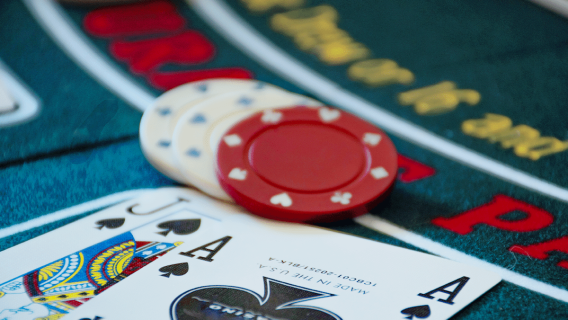Doubling down is a popular strategy amongst gamblers, so popular that it even has its own name, the “Martingale strategy” or the “Martingale system.” Naturally, subscribers often ask about applying the same strategy to investments, which is certainly their choice but not one that I make when implementing my trades.
Before I get into how it applies to a stock I’ve been closely watching, let’s briefly talk about the history and basics of the system.
The Martingale strategy has been around since at least the 1800s, though some argue even the 1700s, when John Henry Martindale, a London Casino owner, allegedly used the strategy. The mystery surrounding the years of Martindale’s system is not the only gray area, as the spelling of his name must have been lost in translation, as Martindale became forever known as Martingale. Regardless …
In its purest form, the strategy is quite simple, which is why it is popular in gambling circles. From roulette to sports betting, the strategy involves doubling up on losing bets. No matter how many times you lose in a row, keep doubling up, as at some point you will win, and recoup all of the losses along the way.
The Martingale Strategy in Practice
Over the past month I’ve been witnessing the use of the Martingale strategy, in some form, in Dynatrace (DT).
Here are the trades, and the premiums paid by this trader:
- 1/3 – Buyer of 13,000 Dynatrace (DT) May 70 Calls for $3.90 ($5,007,000) – Stock at 59
- 1/4 – Buyer of 8,000 Dynatrace (DT) February 60 Calls for $3.20 ($2,560,000) – Stock at 56
- 1/6 – Buyer of 35,000 Dynatrace (DT) February 55 Calls for $3.32 ($11,620,000) – Stock at 53
- 1/21 – Buyer of 35,000 Dynatrace (DT) May 50 Calls for $5.70 ($19,950,000)– Stock at 47
- (2/2) (After earnings) – Buyer of 44,000 Dynatrace (DT) May 50 Calls for $3.90 ($17,160,000) – Stock at 46
At this point the trader owns approximately 80k May 50 calls, as he has rolled his calls down from higher levels so that he can get the best upside exposure possible to a stock rebound.
In theory, the Martingale strategy seems like it could be a good idea, as does this trading strategy.
For example, think about a coin toss. The probability of the coin landing on heads is 50%. And if we flip that same coin 10 times, statistically speaking our win ratio of heads to tails is 50%. But there is something in statistics called variance, which leads to possibly just three heads out of 10 flips. Or even seven heads out of 10 flips. Even “worse,” there will also be the occasion when only one head shows up on 10 flips.
What this system doesn’t take into account, making it even more flawed when it comes to stocks, is the fact that buying stocks isn’t equal to flipping coins or playing blackjack.
For example, if you doubled down and rolled call positions every time a stock like Enron or Lehman Brothers fell 10%, eventually these stocks went to zero and all call premiums would be lost.
Stepping back to DT … the trader above now holds 80,000 May 50 calls. Moving forward, will he be able to double up if the stock goes south again? Eventually, at least for most of us, capital is limited.
Regardless of how this hedge fund/institution manages the DT position, it’s been my experience that, over time, walking away from losing trades, and not doubling down, as well as letting your winners run as far as possible, are the keys to successful trading.
Have you ever used the Martingale strategy in your investing? Do you frequently double down on losing trades? Tell us about some of your wins and losses in the comments below.
